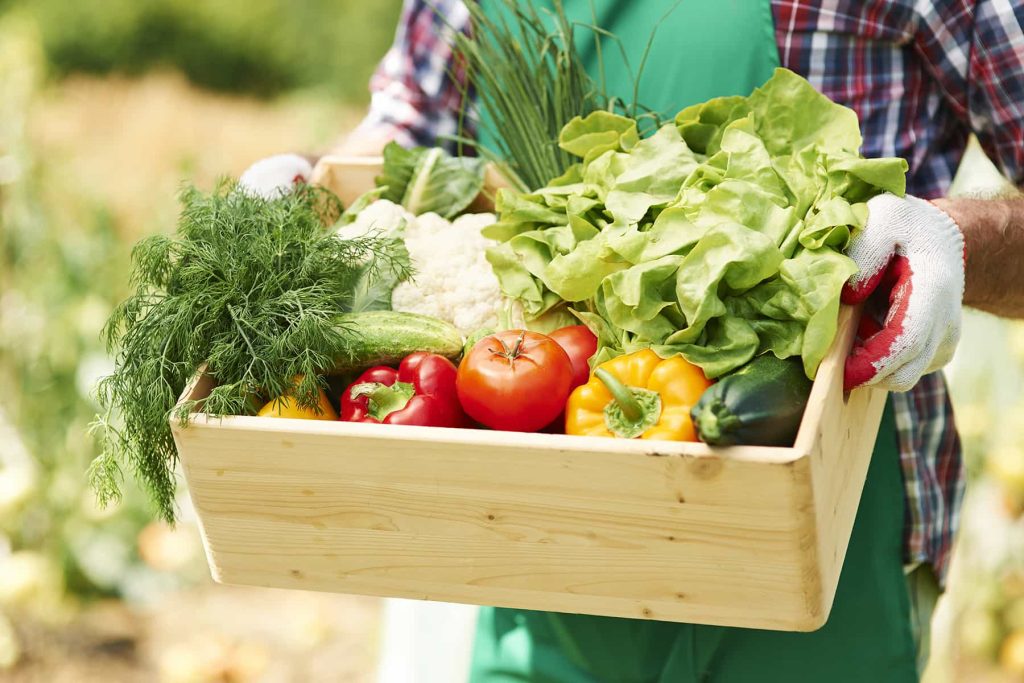Create a Successful Backyard Vegetable Garden 9 Tips
To create a successful backyard vegetable garden, follow these steps:
Choose the Right Location: Select a spot with ample sunlight (at least six hours a day) and good drainage. Consider nearby structures that may cast shadows and ensure easy access to water.
Prepare the Soil: Clear the area of grass, weeds, and rocks. Loosen the soil using a garden fork or tiller. Add organic matter like compost or well-rotted manure to improve soil fertility and structure before you start your backyard vegetable garden.
Plan Your Layout: Sketch a garden plan, considering the mature size of plants and their sunlight requirements. Group together compatible plants and consider crop rotation to minimize pest and disease issues.
Water Regularly: Water the garden consistently, keeping the soil moist but not waterlogged. Use a drip irrigation system or water at the base of plants to avoid wetting the foliage.
Mulch and Weed: Apply a layer of organic mulch to suppress weeds, conserve moisture, and regulate soil temperature. Regularly weed the garden to prevent competition for nutrients and space.
Fertilize Appropriately: Feed your backyard vegetable garden plants with organic fertilizers or compost tea to provide essential nutrients. Follow package instructions and avoid over-fertilization, which can harm plants.
Monitor for Pests and Diseases: Regularly inspect plants for signs of pests or diseases. Practice integrated pest management techniques, such as handpicking insects or using organic pest control methods when necessary.

Harvest at the Right Time: Harvest vegetables when they are ripe, following guidelines specific to each crop. Regular harvesting from your backyard vegetable garden encourages continued production.
Maintain and Rotate: After harvesting, remove plant debris, replenish the soil with organic matter, and consider rotating crops to prevent soil depletion and minimize pest and disease buildup.
Continuous Learning: Stay informed about best practices, attend workshops, and connect with local gardening communities to enhance your knowledge and improve your gardening skills.
Remember, each vegetable in your backyard vegetable garden has specific requirements, so research and tailor your approach accordingly. With patience, care, and proper maintenance, your backyard vegetable garden can yield a bountiful harvest of fresh and healthy produce for you and your family to enjoy.
In addition to the previous steps outlined, there are several other important considerations to keep in mind when creating a successful backyard vegetable garden.
By implementing these practices, you can further enhance the productivity and sustainability of your garden.
Companion Planting: Take advantage of companion planting, which involves growing different plants together that benefit each other in some way. For example, some plants repel pests that are harmful to others, while some plants enrich the soil with nitrogen, benefiting neighboring plants. Research companion planting strategies and create synergistic combinations in your garden.
Vertical Gardening: If you have limited space in your backyard, consider vertical gardening techniques. Vertical gardens utilize walls, trellises, or structures to maximize growing space. Vining plants such as tomatoes, cucumbers, and beans can be trained to grow vertically, saving ground space and providing an aesthetically pleasing display.
Crop Diversity: Plant a diverse range of vegetables in your backyard vegetable garden to promote ecological balance and reduce the risk of pest and disease outbreaks. Monocultures, where a single crop dominates, are more susceptible to widespread damage. By incorporating a variety of crops, you create a more resilient ecosystem that supports beneficial insects and reduces the likelihood of pests and diseases affecting your plants.
Season Extension: Extend the growing season by using techniques such as cold frames, row covers, or hoop houses. These structures provide protection from frost, allowing you to start planting earlier in the spring and continue harvesting later into the fall. Season extension methods are particularly beneficial for cool-season crops, enabling you to enjoy fresh produce for a longer period.
Water Conservation: Implement water conservation practices in your backyard vegetable garden to minimize water usage and promote sustainability. Consider installing rain barrels to collect and store rainwater for irrigation. Use mulch to retain soil moisture and reduce evaporation. Additionally, group plants with similar water requirements together, allowing for more efficient watering.
Organic Pest Control: Emphasize organic pest control methods to manage pests without relying on synthetic chemicals. Encourage beneficial insects such as ladybugs, lacewings, and praying mantises, which prey on garden pests. Employ physical barriers like netting or row covers to protect vulnerable plants. Introduce companion plants that repel pests, such as marigolds to deter aphids.
Seed Saving: Save seeds from your successful crops to create a self-sustaining garden. Learn about seed-saving techniques for different vegetables, ensuring proper storage and labeling. By saving seeds, you maintain the genetic diversity of heirloom varieties and reduce reliance on commercially produced seeds.
Pollinator-Friendly Practices: Create a pollinator-friendly environment by planting flowers that attract bees, butterflies, and other beneficial insects. These pollinators play a vital role in the reproduction of many vegetables. Avoid using chemical pesticides that can harm pollinators and opt for organic alternatives.
Garden Record Keeping: Maintain a garden journal or record-keeping system to track planting dates, varieties, and observations. This information will be invaluable for future reference, allowing you to learn from past successes and challenges. Record details such as pest outbreaks, weather patterns, and crop yields to identify patterns and make informed decisions for the following seasons.
By incorporating these additional practices into your backyard vegetable garden, you can optimize its productivity, sustainability, and overall success. Gardening is a continuous learning process, so don’t be afraid to experiment, adapt, and seek advice from fellow gardeners. Enjoy the journey of nurturing your plants and reaping the rewards of a flourishing vegetable garden.







